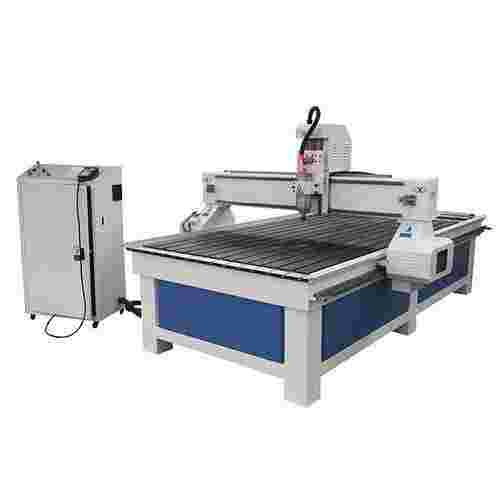
Group Assignment:
Computer-Controlled Machining
CNC Router:
A CNC wood router is a computer-controlled cutting machine specifically designed to work with wood and wood-based materials. "CNC" stands for Computer Numerical Control, meaning the machine's movements are precisely guided by a computer program rather than manual operation. This technology has revolutionized woodworking by offering unparalleled precision, efficiency, and the ability to create complex designs.
How it Works:
The process of using a CNC wood router typically involves these steps:
Applications of CNC router:
CNC router finds application in architectural mill work, aluminum and metal composite cladding, sign-making, graphics & print finishing, wood working, plastic fabrication, metal fabrication, foam packaging, die maker, duct maker, solid surface, MDF cutting, 3D panel mold making, 3D plastic trimming, residential & commercial constructions & many more
Sample images05 from the internet
Technical Specifications:
X-Y Axis Working Area | 1300 x 2500 mm |
Z Axis Working Area | 300 mm |
Spindle Power | 3.5 kW |
Model | 1325 Series |
Job Material | Wood, MDF, PVC, Foam Board, Acrylic, Plywood, HDF, Sign Board |
Spindle Speed | 18000 RPM |
X-Y Movement | Rack & Pinion |
Z movement | Ball Screw |
Command Code | G Code .U00 |
Driven Motor | Stepper Motor |
Control System | Digital Signal Processor (DSP) |
Machine Weight | 500 kg |
Country of Origin | Made in India |
Safety Gears:
Safety gloves are a crucial piece of Personal Protective Equipment (PPE) designed to protect hands from a wide range of hazards in various work environments. The "best" safety glove isn't a one-size-fits-all answer; it depends entirely on the specific risks and tasks involved.
Why are Safety Gloves Important?
Our hands are constantly exposed to potential dangers in many workplaces. Hand injuries are incredibly common and can range from minor cuts and abrasions to severe injuries like amputations, burns, chemical exposure, and nerve damage. Proper safety gloves significantly reduce the risk of these injuries, leading to:
General Rule for CNC Routers (and any machine with rotating parts): DO NOT WEAR LOOSE GLOVES WHEN THE MACHINE IS OPERATING, ESPECIALLY NEAR THE SPINDLE OR ANY MOVING PARTS.
The primary hazard is entanglement. A loose glove (or any loose clothing, long hair, or jewelry) can get caught in the spinning bit, the moving gantry, or other rotating components. If this happens, it can pull your hand, arm, or even your entire body into the machine, leading to severe injuries, including degloving (where skin is torn off), broken bones, or even amputation. This is a very serious risk.
Cut-Resistant Gloves: Graded by ANSI levels (A1 to A9, with higher numbers indicating more cut resistance). Essential for handling sharp stock or tools when the machine is off. These are often made from materials like HPPE (High-Performance Polyethylene), Kevlar, or blended fibers and are designed to protect against cuts and abrasions when handling sharp tools or materials. Handling Raw Materials: When loading or unloading rough wood, plywood, or other materials, you might encounter splinters, sharp edges, or rough surfaces. In these cases, wearing durable, well-fitting work gloves (like leather or heavy-duty synthetic gloves) can protect your hands. |
Machine Settings:
Types of Milling Bits:
Different types of Milling Bits are available in the market. |
Application of different types of milling bits |
Two types of milling bits are available in the labs, 6mm & 3mm Flat End mill bits, and 6mm & 3mm Ball Nose mill bits |
Tool Path Generation:
Working with CNC Router: